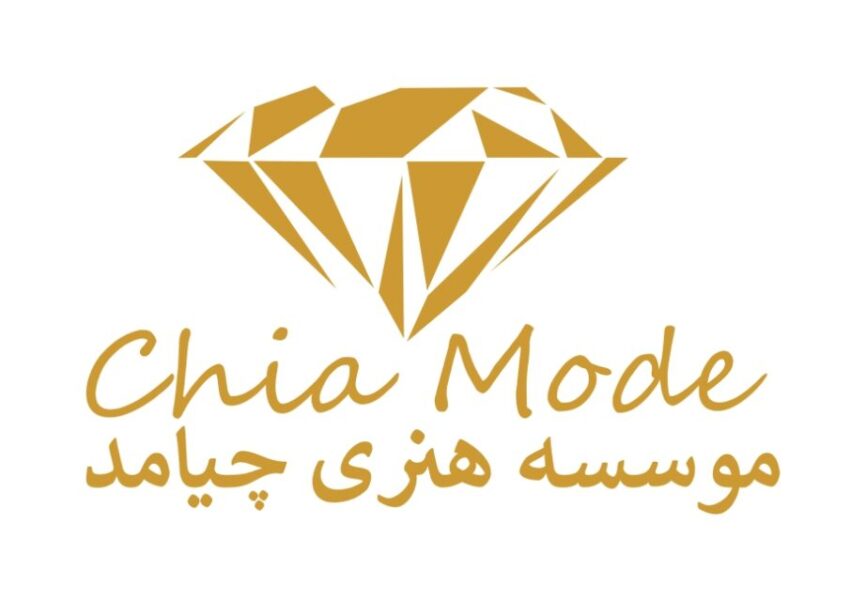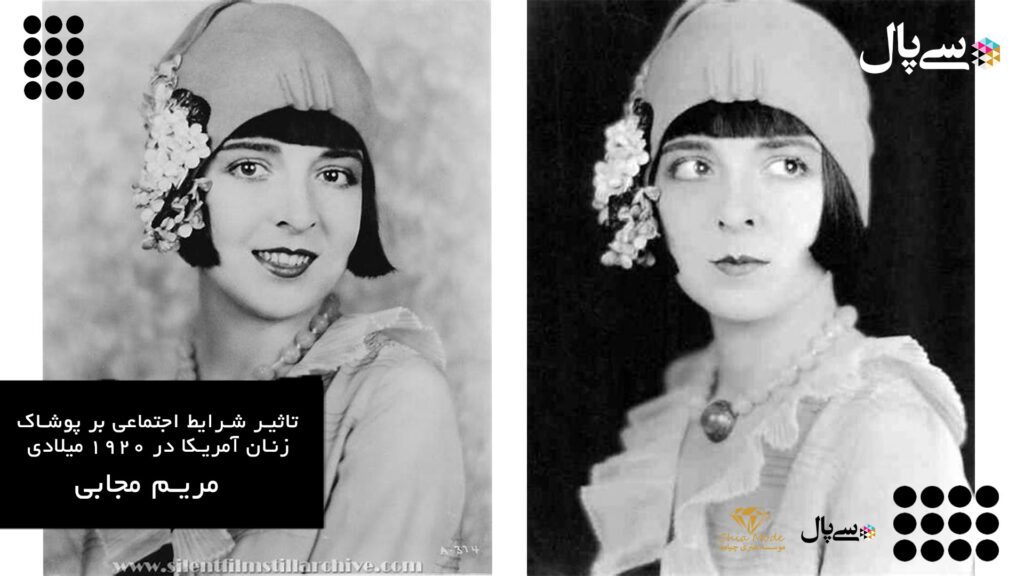Effects of Social Conditions on American women’s apparel in the 1920s
تاریخ انتشار 21 آذر 1401
By: Seyedeh Maryam Mojabi
#سیده-مریم-مجابی
مد نویس جوان
ABSTRACT
Clothes are considered to be the first indication of one’s characteristics in dealing with others and their own society. As a result, clothing, and fashion can reveal a lot regarding one’s personal morality, cultural inclination, social class, and many other features in terms of personality. The emergence of different fashions in a society is dependent on a variety of elements. One of these elements is the outcome of socialissues. For instance, we can refer to Flappers who emerged during and after World War I in the United States in the 1920s. Flappers appeared in American society because of war circumstances during which men had to go to the frontlines and women were required to take many responsibilities in terms of production and support.
In this fashion, women distanced themselves from the Victorian fashion and moved towards more simplicity. After World War I, women became more interested in getting more involved in social activities, such as participating in dancing and parties and driving automobiles. As a result, the existing fashions underwent some changes such as wearing shorter skirts, omission of sleeves, and introduction of new makeup styles. These changes were indicative of breaking existing norms as a result of which some conservative circles raised their concerns.
Flapper fashion was influential in that period. However, it failed to establish a permanent effect on the culture and traditions of the society. As a result, it was doomed to decline, although there are still some fashion designers who take advantage of that fashion in their works. Keywords: Flapper, World War I, Social freedom, clothes, social changes.

INTRODUCTION
Some fashions have emerged based on social conditions of a particular period of time and developed by different social classes. Most of these fashions have emerged after economic and political developments in societies to act as an instrument for revealing people’s approval or disapproval of those developments. If fashions fail to get coordinated with the culture, beliefs, and norms of society, they will not last long and after a while, they will be discarded by users. Clothes are one of the most important visual criteria of every society andcivilization.
In addition to protecting one’s body against climate change, they reflect the beliefs, culture, rituals, and traditions of a society. After World War I,for instance, American people faced a severe and acute depression. Therefore, fashion designers substituted the existing clothes in American society for new ones which were more colorful and vivid. As another example, I can refer to an issue
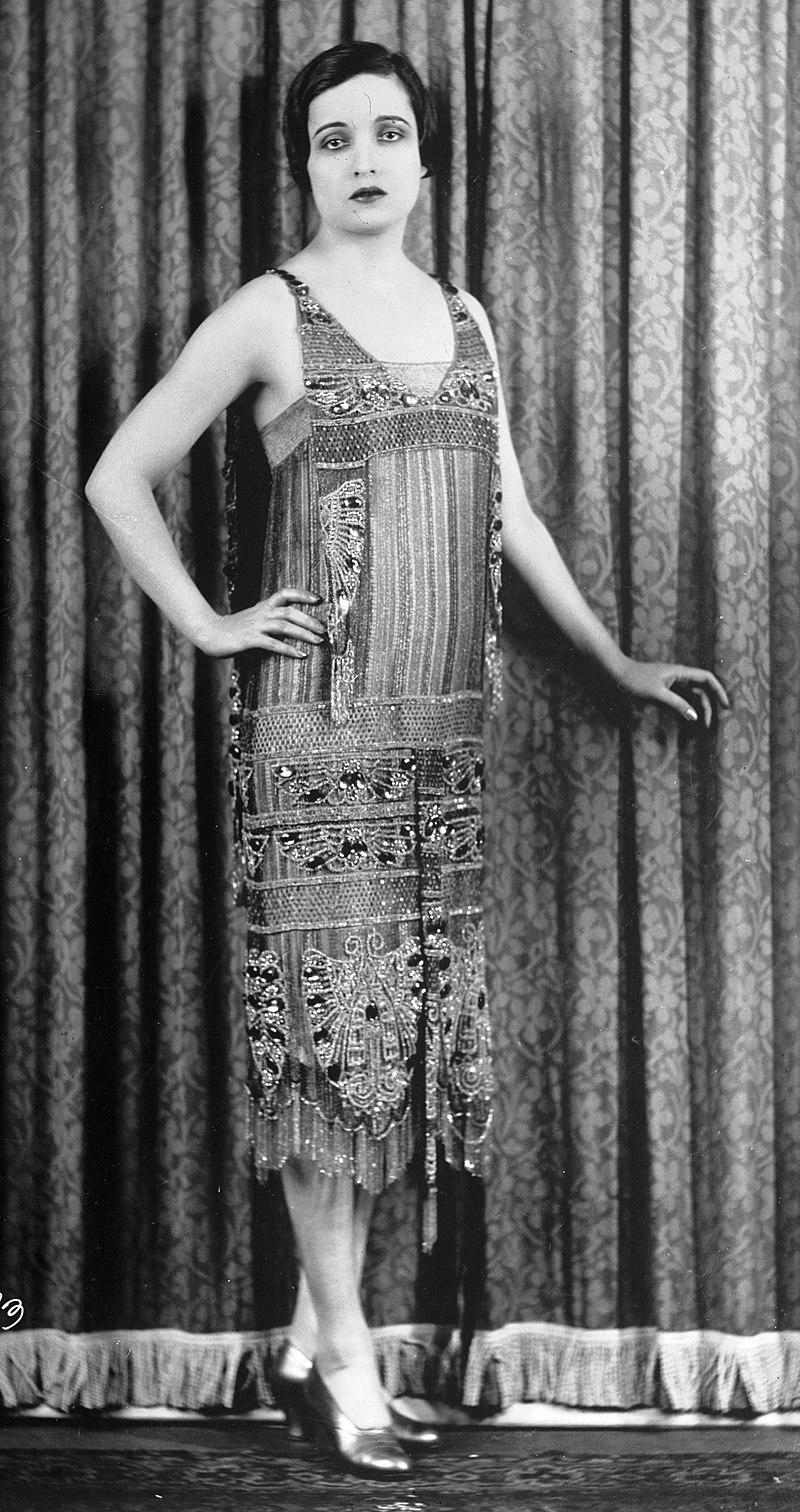
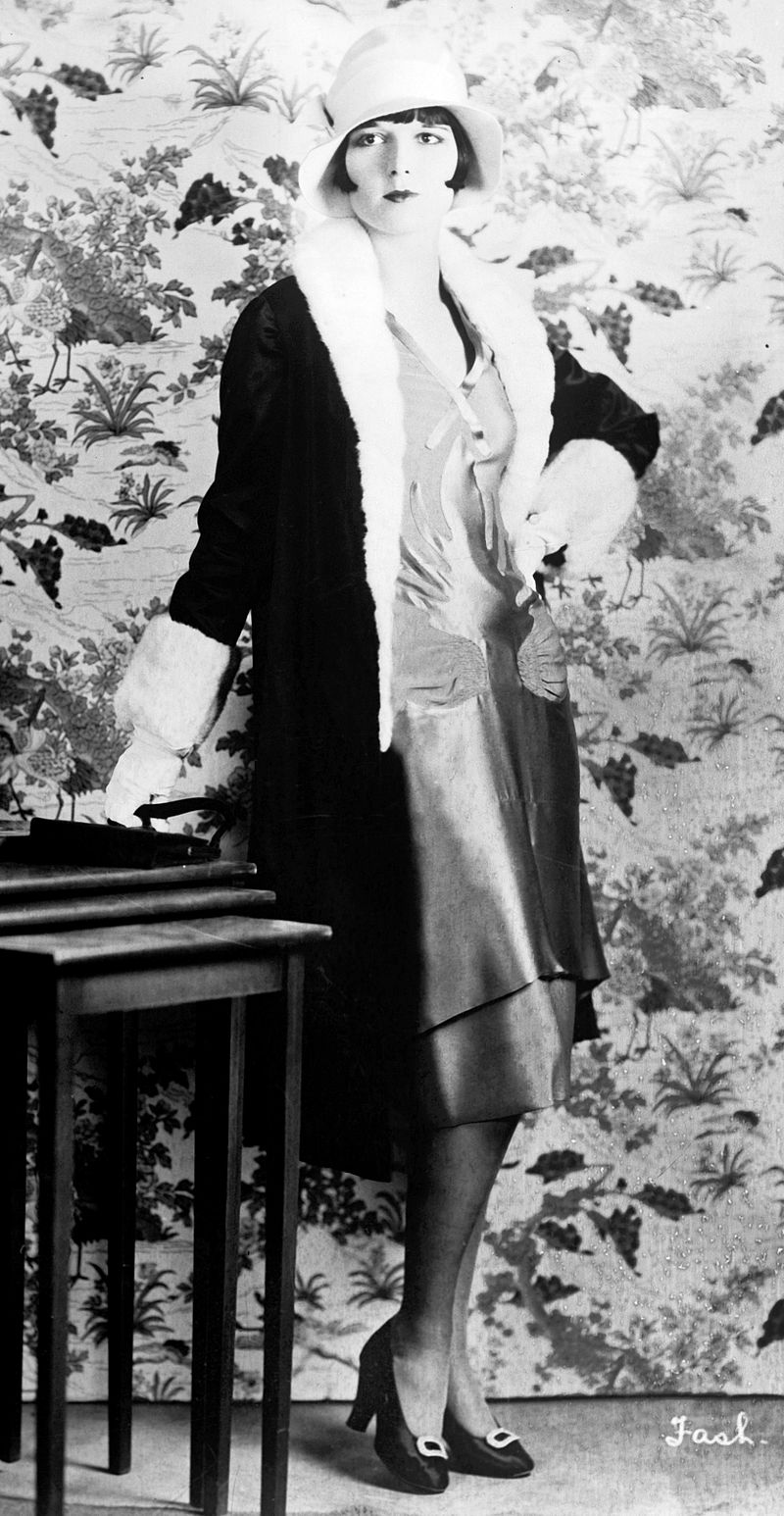
that is the main subject of the current article. As it was pointed out earlier, social and political developments in society can affect the dress code and conduct that society. In 1920 and immediately after the termination of World War I, American society, like any other war-stricken society, was suffering from various consequences of that war. In other words, when World War I came to an end, a new era commenced which was totally different from previous eras. This shift in paradigms, in turn, influenced both the behavior and the dressing style of American society.
People, especially women, were experiencing something which was totally different from the past times. In their reaction to such developments, women adopted a new appearance and made a shift in their behavior. During the war and when their husbands, brothers, and sons were fighting on the frontlines, women experienced extensive independence. As a result, they turned into new individuals with totally new needs. This procedure was increasingly expanding and people from different walks of life, especially the younger generations, were welcoming
- All these developments resulted in the emergence of Flapper fashion. The present article reviews social conditions which resulted in the emergence of Flapper fashion, how it was introduced into society, and what were general developments associated with it. Also, it elaborates on other influential issues such as the color of clothes as well as other related issues. The article endeavors to answer the following questions:
- What factors resulted in the emergence of such a fashion?
- How much does this fashion affect society?
- What factors contributed to the continuation of such a fashion?
RESEARCH BACKGROUND
Due to their daring and audacious approach and their interest in creating change, Flapper’s style is considered vitally important because unlike many others they were greatly united in pursuing their objectives. Because there were limited numbers of resources about Flappers, I had to carry out extensive research in this regard. One of the resources that I used for compiling the present article is an article entitled: “Flapper Fashion: Rebels in the 1920” written by Alison Tolman which has been published in November 2017. (Tolman, Rebels in 1920, 1917)
RESEARCH METHODOLOGY
In the present research, I have used the library research methodology.
EMERGENCE OF FLAPPERS AND THEIR OBJECTIVES
World War I created a new condition for the United States and brought massive 3 changes to American society. For instance, when men went to war frontlines, women were obliged to find jobs in order to earn salaries for their livelihoods. During this period and as a result of these developments, women achieved a kind of independence that was unprecedented in their history. Economically speaking, instead of devoting themselves to mere housekeeping activities, women endeavored to find jobs that made them capable of pursuing their interests more freely.
Such developments made women acquainted with their rights and after a while, they decided to obtain those rights. Obtaining equal rights with men was the main objective of Flappers. They wanted to be able to get unlimitedly involved in affairs that were considered peculiar to
men. When war came to an end and men returned home from the frontlines, many women were reluctant to lose their obtained financial and social independence. In such circumstances, introducing tremendous shifts in their dress codes and styles were two of the most important cases that women had at their disposal to express their support of the above-mentioned liberties. Many women, especially younger ones, dressed in a way that was deemed abnormal in comparison with the prevalent Victorian style. Women’s clothes, skirts, hats and shoes, as well as their makeup, were so different from the past that many individuals (both men and women) could not tolerate them and expressed their opposition to them. By breaking the old and established traditions, Flappers were commonly known as “new ladies”.
Their behavior had become different: they spoke and delivered speeches as freely as they wished, they smoked cigarettes in social and family gatherings, they drank alcohol, they danced in clubs, especially jazz clubs, and they showed no opposition to sexual promiscuity. As a result, they were opposed by many people. By resorting to such initiatives, women were trying to obtain equal rights with men. By getting involved in men-only affairs, these women were postulating that making judgments based on sexuality is an unacceptable, insulting, and discriminating act.
Despite social opposition to their approach, Flappers continued their activities in order to be able to promote their achievements. Various political, cultural, and technological factors contributed to the growth and promotion of Flappers. They were even able to obtain the title of the first independent women in American history. Despite all these oppositions, this new fashion became so prevalent that many scholars of contemporary history have described it as the envisagement of the United States in the 1920s. (Tolman, Rebels in the 1920s, 2017) Women’s Success and Social Demands Concurrent with the Emergence of Flappers

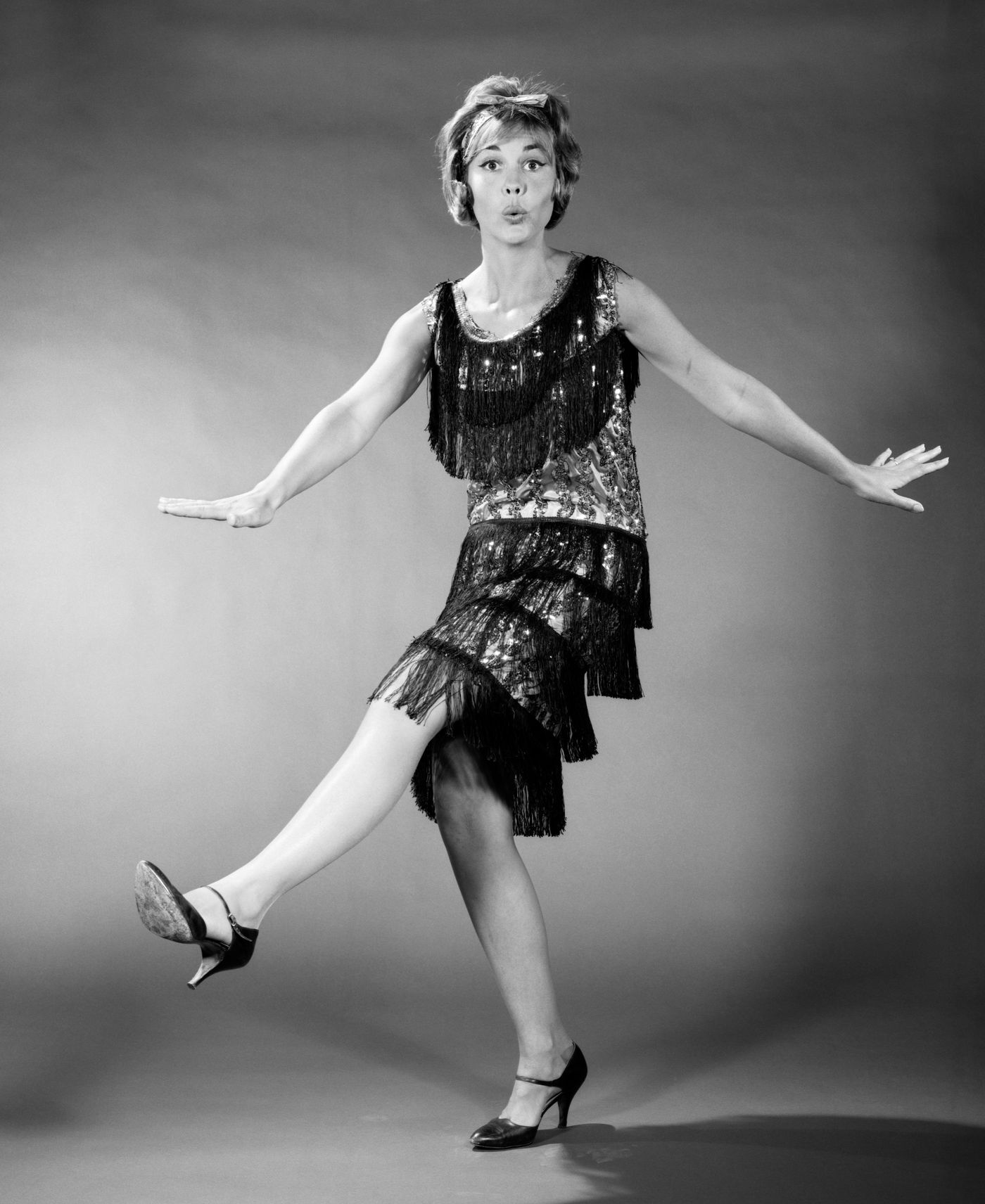
4
Despite the fact that Flappers were faced with extensive social opposition, they were insisting on following up on their social demands. Meanwhile, there were some groups who were supporting Flappers and their cause. As a result of this support, women were able to achieve some successful results, including participation in elections and permission to drive. On some occasions, Flappers received economic support, too. For instance, the famous automaker company of Ford, in a supportive initiation, sold its products to women at a lower price. Such supports and similar initiations led more women to purchase and drive cars in the American society of the 1920s.
FLAPPER DESIGNS
Upon the emergence of Flappers, American society experienced tremendous shifts in women’s clothes and style. Some elements of women’s clothes were discarded and some new ones were added to them: reduction in length and shift in their dress silhouette; omission of waistline; omission of sleeves; addition of decorative items; and production of different sportswear. Reduction in length and shift in their dress silhouette: reducing the length of dresses was one of the most important changes during this period – unlike the Victorian period, Flappers wore short skirts (knee height was considered short during that period.) This development was considered to be a major break from the prevalent norms of the Victorian Period. Omission of waistline: Another important change that took place was the removal of the waistline and after a while, using a cut line on the hips. One of the special features of fashion design in that period was trying to hide the female body by using clothes without tightness in the waist which made girls look different with short hair, flattened breasts and straight waists.
Omission of sleeves: omission of sleeves was also a fundamental change. As it was pointed out earlier, the Flappers era was also known as the era of jazz, in which women were allowed to enter jazz clubs. Women of this period freely danced in jazz clubs. Therefore, they omitted the sleeves of their dresses in order to be able to dance as freely as possible. Finally, this change of shape altered the overall shape of the dress into a ‘V’ shape. (visforvintage.net) Addition of accessories: addition of accessories, such as sequins, tassels, beads, laces and margins, especially in the lower parts of dresses not only increased their beauty but also made them appealing during the dance, especially in Charleston dance. As a matter of fact, the appealing shape of Flapper dresses during the movement of the body was one of the main features of dresses during this period.
5
Production of different sports wear: Flappers were quite effective in the promotion of knitting clothes. They used knitted fabric in the production of underwear and sports wears (especially swimming suits) and then developed its usage in the production of other types of clothes. In order to promote the usage of knitted fabric in the production of different types of clothes, they established associations that collected free-of-charge magazines and learned how to use knitting (vintagedancer.com)
HANDBAGS, SHOES, AND ACCESSORIES
With many significant changes that took place in the design of flappers’ clothes, changes in clothing accessories and other coverings seemed practical and necessary and these changes were implemented in the following cases. Gloves, scarves and headwear, stockings, and ornaments
*Gloves: since Flappers had omitted sleeves in their clothes, women were able to wear gloves. These gloves were mainly long and tight and were generally made of satin and velvet.
* Scarves and headwear: they used to wear long and thin scarves with decorated margins that were adorned with feathers. They were salient features of the Flapper fashion. Headbands are fabrics that can be easily simulated using satin straps.
* Hats: wearing hats was one of the main expressions of Flapper fashion. Different types of hats were used by flappers. Among all, two of them were as follows: the first was quite tight and covered the head up to the eyebrows; and the second was like a swimming cap and covered hair up to the back of one’s neck. Both of them covered the whole hair of a woman so that the user did not need a hairstyle. It was the common feature of these two hats.
* Stockings: stockings covered up to the below knees.
* Shoes: since Flappers were greatly interested in dancing, it was vitally important for them to wear shoes that were appropriate for dancing. In that


6
period, high-heeled shoes were not fashionable. Therefore, flappers wore medium-heeled shoes. Today, women imitate Flappers by wearing shoes with buckles and straps.
* Decorative: wearing long pearled necklaces was the prevalent decorative accessory used by Flappers. In some cases, they used multiple stepwise strings of pearls. It should be mentioned that Flappers did not use thin chains and they preferred to use strings instead of them. Nowadays, Flapper fashion has been transformed and women wear thin and long shawls, which are tied around the neck and decorated with beads instead of pearls.
COLOR AND TEXTURE OF FABRICS IN THE 1920S
Fabrics used in this period were also transformed extensively. Generally speaking, the fabrics of the Flapper era were very delicate, thin, and light. In order to preserve their clothes. They only washed the dirty part of the dress instead of washing entire parts of it. With this method, Flappers could preserve the form and color of the fabric and maintain its shining features. Various types of fabrics were used during that period. Some of those fabrics are enumerated as follows:
* Cotton: A growing industry at that time was the cotton mill and many clothes were made of durable cotton fabrics.
* Wool: It was used for producing fabrics in different ways.
* Silk: Silk was used in different parts of clothes such as collars and ties.
* Rayon: It was made of processed wood pulp. At first, it was known as artificial silk. In the early 1920s, rayon was so common that they were even used in producing underwear and ties.
* Linen: Linen is an old fabric that was first used by ancient Egyptians. It is a light fabric which does not become dirty soon. Linen was usually used for producing underwear and sportswear.
FABRIC COLORS IN THE 1920s
During this period, Flappers used solid colors. They used to wear mono-colored clothes. In the early 1920s, the Flappers used colors such as black, dark blue, bronze, and violet. Later on, they used green jade, dark pink (rose), sea blue, and light gray. The use of these colors made accessories, such as beads, sequins, ribbons, and embroideries look more beautiful.
7
It is worth mentioning that patterns such as stripes, polka dots, check, and huge geometrical designs were used in that era. These designs were usually used in skirts, children’s clothes, or underwear garments. (Vintagedancer.com)
WOMEN’S MAKEUP
Cutting their hair short and doing masculine jobs were among the early initiations of women of this period to express their demands. However, many women were reluctant to act in this way, because their appearance would seem too masculine. In addition, they used to wear special makeup. They utilized special eyebrow pencils to turn their eyebrows dark, covered their eyes with kohl, and used silver shades to beautify their eyes. Another important feature of Flappers was the fact that they preferred red for their lipsticks. (Visforvintage.net)
CRITICISMS AGAINST FLAPPERS AND THEIR FALL
We should bear this important point in mind that parts of society did not approve of Flappers. Oppositions against Flappers were so strong that, in the late 1920s, many women expressed their dissatisfaction over the absolute unconditional liberties of this group and wanted them to be banned. For instance, swimming suits used by Flappers were deemed inappropriate by other people. These oppositions continued up to 1929. In November 1929, stock exchanges collapsed all of a sudden and as a result, American society experienced a harsh financial and economic crisis. People became widely depressed. As a result of this crisis, all dances, songs, and luxurious parties came to an end. Women were no longer capable of purchasing new and fashionable clothes and had to substitute their extravagances with economic thrift. (Allison Tolman, Rebels in the 1920s, 1917)
CONCLUSION
By reviewing the history of fashion, it can be realized that different styles are selected, designed, and produced due to numerous reasons. As it was pointed out, environmental factors, such as heat, cold, and sunlight, can play vital roles in selecting and promoting different kinds of fashion. Other factors, such as social status, personal thoughts and etc are also influential in this regard. Some special social conditions such as wars or revolutions affect the way that people dress. Furthermore, in some other social circumstances, people wear some clothes as a means of expressing their own social demands. The present article reviewed Flapper fashion as a case study in this regard. This fashion became prevalent in the US in the 1920s and left tremendous effects on American women. We can witness
8
the influence of Flappers on many movies of this period. Flappers emerged during World War I. They were advocating of more liberties for women. Flappers were attempting for more comfortable clothes for women so that they can carry out their social responsibilities more easily. By adopting this new fashion, women found themselves in a new social condition as a result of which they became able to take part in many social activities such as driving automobiles, participating in dancing and parties, and enjoying many other social liberties. During this decade and beforethat, women were living in harsh social conditions. However, upon the introduction of this new fashion, which was more liberal, women changed their dress codes and wore dresses that were totally different from the Victorian era. This new fashion was faced with heavy criticism from conservative circles who considered it a break from the accepted norms of society.
Women insisted on their demands and continued to promote this new fashion. Nevertheless, Flapper fashion was unable to establish a cultural relationship with the society as a result of which its foundations were undermined. Meanwhile, the economic crisis and the collapse of the stock exchange market further increased the gap among social classes in American society. These developments created an extensive mental depression in the society. Financially speaking, people were no longer able to buy fashionable and luxurious clothes. After a while, these developments led to the decline of Flappers and they were substituted by more modern fashions. Despite the fact that some fashion designers are still inspired by Flappers, this fashion is now desolate and is no longer considered a lively and dynamic trend in the world or even in the United States.
In conclusion, it should be pointed out that despite the fact that Flapper fashion is desolated now and has lost its significance in the United States, its advocates and designers – who were trying to obtain further social liberties for women – achieved several favorable objectives which are still preserved in American society.
References
1-Tolman, Allison, Flapper Style: Rebels in the 1920, November 2017.
2-Jame, A.E., Her Majesty the Flapper, London Magazine, November 8 th, 1910.
3-Menendes V. and De La Haye, A 20 th Century Fashion, 1999.
4-Smith Sonian, Institution Fashion: The Definitive History of Fashion and Style, 2012.
5-Spivack, Emily, 2013, The History Of the Flapper, Smithsonian.com, November 2017.
6-History.com
7-Zeitz Joshua
8-Kelly Boyer Sagert, A Guide to an American Subculture
9-Gourley Catherine, Flappers and the New American Woman
10-Weissman Joselit, Jena, A Perfect Fit: Clothes, Character, and the Promise of America
11-Vintagedancer.com
12-Visforvintage.net
#مدنویسان-جوان#مد-و-فشن #مریم-مجابی #مقالات_مدنوسیان_جوان #پوشش_زنان_آمریکا
